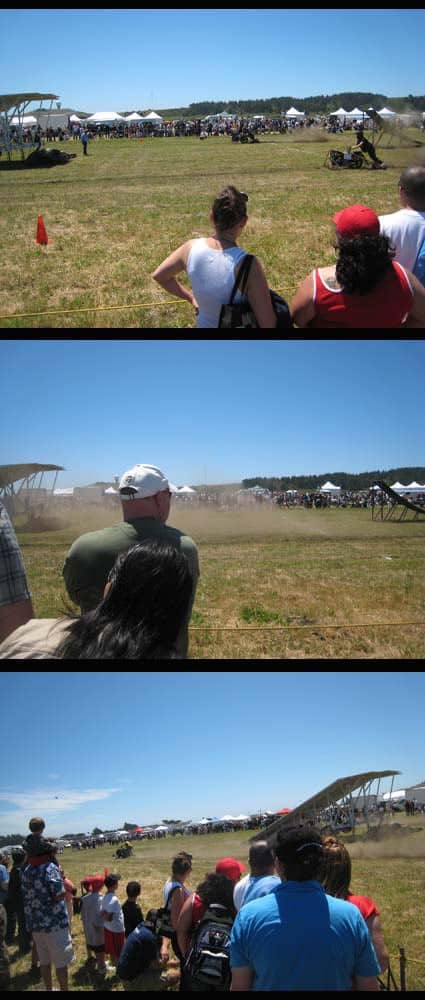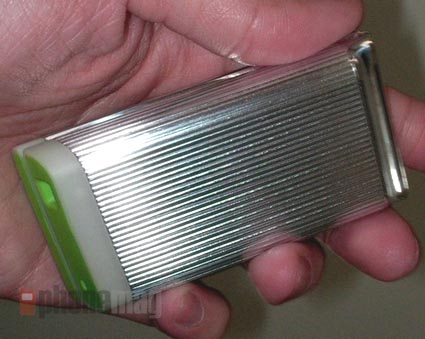Carol’s War Story: Driving Force

Carol Rossi is the senior director of user experience research at edmunds.com.
Since Edmunds.com is an auto website we spend a lot of time hearing about how people shop for cars. A couple of years ago we ran a shop-along study where we conducted in-home interviews to both understand car shopping behavior and simultaneously screen people we may want to go with on test drives to dealerships. I always take someone else with me when running interviews – a designer, product manager, exec, etc. – so they get first-hand exposure to real car shoppers.
This time I had the head of editorial with me. The Edmunds editorial team has a long-term fleet of cars so they can write about car ownership. My colleague tells me that he’ll drive and we’ll take one of the fleet cars. We meet in the lobby and he walks us over to a $100,000 red BMW. Not what I typically show up in to interview somebody who is probably shopping for a Honda.
The interview is in Hollywood and although it’s only 10 miles from our office this is LA so we drive up Santa Monica Blvd for like an hour. We find the address and it’s not in the best part of Hollywood. There we are with this six-figure car. Eventually we find a parking spot that looks relatively safe and walk to the building.
We use the callbox and are buzzed into the building. We look for the apartment and realize it’s in the basement. We’re greeted by our interviewee, a middle-aged guy who’s described on the screener as a self-employed writer (like much of the population of Hollywood). The apartment is the tiniest living space. It really looked more like a one-car garage. The air was stuffy, there was a unique odor that was somewhere between musty and dusty, there were no windows open and no A/C, with carpet that had maybe never been cleaned. I started to hope the allergy attack I was sure was coming happened after we were finished. The apartment was overstuffed with piles of papers (screenplays?), VHS tapes, and posters of independent movies (including one with a woman in bondage gear who we later discover is his wife). Although we’d normally want to capture anything descriptive of the scene, to avoid distracting the product team who would watch the video later we had to position the camera to keep the poster out of the shot.
We’re chatting and after a few minutes our interviewee’s 35-year old wife comes out with a baby. The wife is some kind of Hungarian model (think of a European version of Gisele Bündchen). The guy turned out to be really nice, educated and articulate, but also clearly not at all someone likely to test drive a car at a dealership. Basically he hates cars, rides his bike everywhere, is trying to get off the grid but needs a car now that there’s a baby, and says he’ll buy some used car that’s parked on the street with a sign in the window.
Was this interview all for naught? From the first moment through the end I wasn’t sure. You always learn something new, so even though this guy did not meet our criteria for people likely to buy a car at a dealership we certainly got exposure to a type of shopper we knew theoretically existed but hadn’t yet encountered (“the eccentric car hater”).
I’ve seen homes like this (and worse) but after the interview we walked outside and my colleague couldn’t unload fast enough. He’d never seen a living situation like that. In rapid succession he declared (out of concern for our safety) “When we first walked in I thought it was a trap – I was looking for a way out” but then (out of concern for the child’s health) repeated several times “They have a baby in there!!” And then he began to express his concern for my safety “Do you go on these interviews alone?…You take a guy with you, right?”
After this emotional decompression, we jumped back into the ostentatious Beemer and drove down Santa Monica Blvd., away from the unknown of the ethnographer’s life to the predictable comfort of our office…until the next interview.




 Lawnmower Races, Half Moon Bay, California
Lawnmower Races, Half Moon Bay, California



